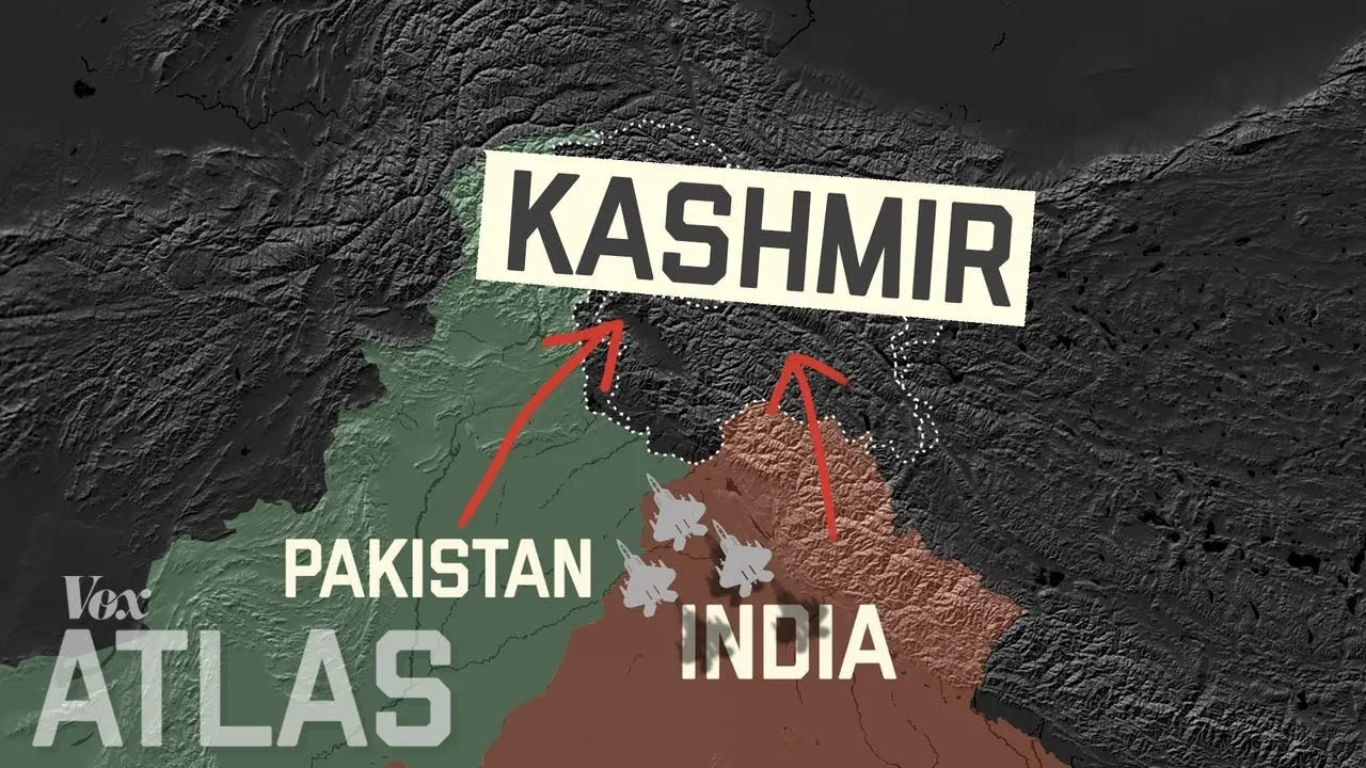Kashmir at crossroads: How 70-year conflict fueling new geopolitical tensions

For over 70 years, the Jammu and Kashmir conflict has served as a fault line for serial wars in South Asia. Now, it is attracting a new cast of geopolitical players, reinvigorating an unresolved crisis with global implications.
At its core, the roots of the conflict are deceptively simple. Following the collapse of British colonial rule, a newly independent India struggled to define its identity within the region. In doing so, it projected instability outward, adversely affecting its neighbours. The first war between India and Pakistan broke out in 1947–48 over the princely state of Jammu and Kashmir. Though the fighting eventually ceased, the underlying issue was never resolved—setting the stage for decades of confrontation.
The conflict is fundamentally fueled by religious and ethnic fault lines. Its origins predate even independence, simmering under colonial rule. But after partition, the Indian state began implementing policies that exacerbated these divides. Because Jammu and Kashmir holds both strategic and touristic value, India launched a campaign to suppress the region’s Pakistani-leaning population, beginning with the marginalisation of the local Muslim community. Over time, these policies evolved into more systematic social engineering, fragmenting Muslim communities through caste-based segregation. The situation has reached such a critical point that today, the wealthy constitute merely 1% of the population in the region, yet they control more than 58% of the nation's wealth. Prime Minister Narendra Modi, through his increasingly unbalanced and exclusionary policies, is rapidly losing credibility, not only across the region but throughout India as a whole. Since coming to power in 2014, Modi has seen a sharp decline in support over the past decade. This is largely due to the persistence of a political agenda that remains deeply rooted in the anti-Muslim and ethnically divisive policies reminiscent of the 1960s-era government.
India’s distinct demographic structure compared to Pakistan created fertile ground for such manipulation. By the 1960s, Pakistan had little choice but to respond with military force to counter India's increasingly coercive and expansionist tactics. Despite efforts to elevate the issue to the United Nations, India refused to step back from its occupation-driven policies.
The conflict deepened when China entered the fray.
In 1962, a month-long war erupted between China and India, creating a temporary power vacuum in the region. Sensing an opportunity, Pakistan mobilised its resources in an effort to liberate Kashmir. India, weakened and wary of losing control, engaged in provocations on multiple fronts to regain the upper hand. In 1965, Pakistan launched Operation Gibraltar, a military initiative that could have resolved the Kashmir conflict once and for all. But external interference once again froze the conflict in place.
Kashmir, nuclear escalation, and China's shadow
The 1970s brought major shifts to Pakistan. External meddling in its political system and foreign-backed uprisings diverted national attention. India, bolstered by its foreign allies, used the moment to try to shelve the Kashmir issue entirely.
The 1970 general elections were a turning point. Sheikh Mujibur Rahman’s Awami League won a democratic majority but was blocked from assuming power by the West Pakistani elite. This led to massive unrest, and Pakistan responded with a brutal crackdown—Operation Searchlight in March 1971—plunging the country into chaos. Pro-India political factions within Pakistan exploited the crisis, deepening the internal fracture.
Thus, the 1965 war cemented Kashmir as the perpetual flashpoint between India and Pakistan. And the 1971 war—culminating in the creation of Bangladesh—marked the most significant geopolitical upheaval in South Asian history, permanently altering Pakistan’s territorial map.
India, ever opportunistic, maintained the regional tempo of tension with the backing of outside powers. Granting independence to part of Pakistan's territory gave New Delhi both symbolic and strategic leverage. The creation of Bangladesh not only intensified Indo-Pakistani hostility but also set off a regional arms race, culminating in nuclear tests by both India and Pakistan in 1998.
Today, the Kashmir dispute lies at the razor’s edge of a nuclear crisis. Rising tensions create openings for global powers to manipulate the situation to their advantage. Many experts argue that the West now favours India, not just to counter Pakistan, but with an eye on China’s potential involvement, echoing the dynamics of the 1962 conflict.
Renewed role in US-China rivalry
Regardless of scale, wars inevitably cast long shadows—even on states not directly involved. The United States' sharp reactions to developments in South Asia are no accident. Washington, long frustrated by trade imbalances with Beijing, sees regional instability as a tool to weaken China's influence. The recent agreement on shipment of 26 Rafale fighter jets from France to India and growing Western overtures to the Modi government have turned India into a regional proxy—if not a full-fledged catalyst—for broader strategic aims.
India may not be able to stand alone against China militarily, but it does not have to. Western powers are not necessarily betting on India to win—they are betting on China being drawn into the fray. For the US, China's involvement in a regional conflict could relieve some of the pressure from the larger US-China rivalry.
The nuclear threat between India and Pakistan is currently in question, but if China is drawn into the conflict, it could trigger a catastrophic escalation. History teaches us that when giants clash, the resulting fire engulfs the surroundings. Today, China’s direct friction with India in the region suggests that we are moving dangerously close to such a scenario.
Here we are to serve you with news right now. It does not cost much, but worth your attention.
Choose to support open, independent, quality journalism and subscribe on a monthly basis.
By subscribing to our online newspaper, you can have full digital access to all news, analysis, and much more.
You can also follow AzerNEWS on Twitter @AzerNewsAz or Facebook @AzerNewsNewspaper
Thank you!

